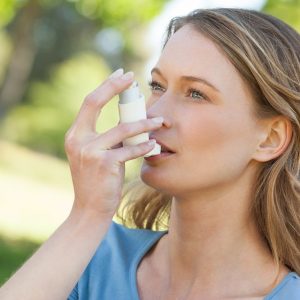
SPRINGTIME ALLERGIES IN CANADA
Here’s what you need to know about springtime allergies in Canada:
Your eyes are watery, your nose is itchy and you can’t stop sneezing – welcome to springtime allergy season.
While spring ushers in the green leaves and warmer weather, for some people it means a months-long stretch of annoying symptoms. About 20 to 30 per cent of Canadians suffer from some kind of seasonal allergy.
Springtime is easily the worst season when it comes to allergies. Which pollens are prevalent differs from province to province but the first seasonal allergy to pop up is tree pollen which could start as early as March.
Sometimes, Canadians don’t even know they’re grappling with allergies. Instead, they think they’re dealing with a cold or feeling under the weather.
It’s like having a bad cold that’s persistent. You don’t have a fever and aches but you feel congested and sneezy. It interferes with your sleep, concentration and performance, so in many ways, it affects your quality of life.
What are the most common allergies in the spring?
Because temperatures vary across the country, allergy season will start at different times depending on how each province is faring.
Across the board, tree pollen allergies start first. It could start in late March and move into June for Ontario, Quebec and Atlantic Canada, while B.C. has the “worst” tree pollen season kicking off as early as February and into June.
After that, grass and ragweed pollens start-up in August.
This will vary depending on where you live, moisture levels and temperature – these all determine how much pollen you’re getting.
Moulds grow quickly in the heat and high humidity. Believe it or not, it’s not just what you think of in attics or basements – mould spores crop up on your lawn outside after snow melts and the leftover grass from when you mowed last autumn resurfaces.
When people think of mould, they think of the black stuff on walls, but mould spore counts are incredibly high outside too.
What are the symptoms?
If you’re fighting a battle with springtime allergies, you’ll know. Your symptoms could include:
- Runny or stuffy nose
- Puffy or watery red eyes
- Itchy eyes or nose
- Dark circles under the eyes
- Perpetual sneezing
- Itching in your ears
Why do I have allergies?
Pollen, from trees, grass or weeds, is released into the air to fertilize other plants. But sometimes they get into your nose and nasal passage.
If you’re allergic, your immune system kicks in thinking the pollen is a hazard to your body. This is why your body sends out histamines into your blood – that’s when your nose starts running and your eyes get watery as your body tries to expel what it thinks is a danger.
It’s a misfiring of your immune system by turning something innocuous into something it wants to fight off drastically.
It’s genetic, too. If one or both of your parents has an allergy, you’ll probably end up with similar symptoms too.
Symptoms can start as early as childhood, in teenage years or even as an adult.
If you’re not sure, simply get referred to an allergist for testing. You will be screened for common allergens, such as various types of pollens, cat and dog fur, dust mites, mould spores and more.
How can we tell if we’re in for a bad season?
An early and hot spring is a bad sign for allergy sufferers, the experts warned.
Grass season is one of the worst factors. The pollen conditions with a very hot and humid summer combined with wind make the “perfect” scenario.
Rain washes pollen away, but pollen counts can soar after rainfall. On days without wind, airborne allergies are grounded. Once the wind picks up again, pollen counts in the air surge.
Geography makes a difference as well: Ontario has the most ragweed, while B.C. sees the most tree pollen.
How can I ease the symptoms?
There are a handful of ways you can safeguard yourself to avoid a nasty few months of allergies.
Over-the-counter-meds: Antihistamines help to tame symptoms, but make sure you’re seeking out options like Reactine, Aerius, or Allegra.
Try to avoid Benadryl or other medications that come with side effects, such as drowsiness.
Prescription medications: If needed, your doctor or allergist can prescribe eye drops, nasal sprays or other medicines to help alleviate symptoms.
Allergy shots: Those with severe allergies receive multiple injections – sometimes weekly – to tame their allergies.
Environmental factors: You can lessen your risk of encountering severe allergies by being mindful of your surroundings. For starters, don’t dry your clothes outside – that could bring in pollen that’ll trigger your symptoms.
If you’re going swimming over the summer in a river or pond, wear goggles and nose clips to keep any allergens out of the way. Once you’re out of the water, rinse off.
When you’re in the car, keep your windows rolled up and the air conditioning running. Try to keep your windows closed when you’re at home, too.
But don’t shutter yourself during the warm months.
Some people may choose not to go outdoors when [pollen] counts are high, but it’s hard to watch the weather channel and live life like that.
Pollen allergies are a fact of life in this part of the world. We have good things out there now to help you stay prepared.

Most Commented